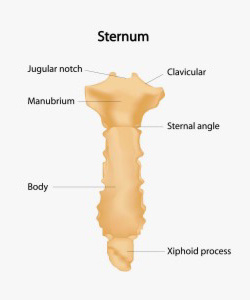Crack In Chest Bone
Jun 25, 2014 chest bone pain The bones of the chest cavity are part of the outer chest wall with the breastbone, collarbone and ribs in the front, ribs on the sidesand.
Online Medical Dictionary and glossary with medical definitions, c listing.

The Skeletal System Teacher Pages. The adult human skeletal system has 206 bones that provide support, protection and shape to the body. It also has other important.
– friggoffricky 0 очков1 очко2 очка
2 года назад
1 дочерняя ветвь
извините, но пост отправлен в архив и за него больше нельзя голосовать
i just googled this because its been a problem of mine for a while now ever since i slept on a buddies couch on my shoulders side ways. It feels amazing popping your sternum. at first, but now it is excruciating pain when it cant crack. I went to my doctor finally and said with quite the firm tone to never crack my sternum again as it is ligaments and i am damaging them profusely every time I crack. Hope this helps.

Apr 16, 2008 Bone Thugs-N-Harmony-Thuggish Ruggish Bone Thuggish Ruggish Bone feat. Shatasha Williams Intro We re not against rap We re not against rappers But we.
Hinge Joint: This joints allows back and forth motion in one direction only. Hinge joints are found in the elbows, knees, fingers, and toes.
Gliding joint: This joint is found in the wrists and ankles and allows bones to slide against each other.
Pivot joint: This joint allows bones to twist sideways against each other. Pivot joints are found in the vertebrae.
Fixed joint: There are some places where two bones meet but have no movement in an adult. Bones of the cranium skull are fixed joints. When a child is born the bones of the skull are movable to allow for brain growth. As the bones ossify get harder, the bones fuse together and create the fissures any of various lines between bones in the skull.
Image: P07647
Fractures
A fracture is a broken bone. The type of fracture that occurs depends on the type and location of the fracture, the seriousness of the injury, and the condition of the bone itself.
Fractures can occur because of injuries, osteoporosis a softening of the bone due to a lack of calcium, or overuse. Stress fractures are due to overuse and are commonly seen among athletes.
Types of fractures
Closed or simple the bone is broken, but it does not break the skin.
Open or compound the bone is broken and it pierces the skin.
Transverse the fracture is at right angles to the long axis of the bone.
Greenstick the fracture is only on one side of the bone and does not go all the way through to the other side.
Comminuted a fracture that results in three or more bone fragments.
Pathological--the bone has been weakened or destroyed by disease so that it breaks easily
Stress--There is a hairline crack in a bone, sometimes not even visible on an x-ray, that is caused by repeated injury or stress on the bone.
X-rays help determine the position of the fractured bones. If necessary, the orthopedist will correct the position of the bones to allow for proper healing. This correction is called reduction of the bones.
Types of fracture treatment
Several types of treatment may be used to correct a broken bone s position and allow it to heal properly. A plaster or fiberglass cast can be applied after the bone has been repositioned to immobilize the bone while it heals. Depending on the location of the fracture, the cast or splint may allow some movement at a joint.
Surgical procedures are performed when the fracture is severe or when the bones could not heal in a proper position without internal fixation. In this open reduction procedure, an orthopedist, a doctor specializing in the branch of medicine that corrects and prevents skeletal disorders and injuries, repositions reduces the bones into their normal positions, and often holds the bones together with plates, pins, or screws to allow the bones to heal properly. Rods may also be inserted down through the marrow in the center of the bone.
External fixation may also be used to treat fractures. Pins or screws are inserted into the broken bone above and below the fracture. The bone is repositioned and the pins or screw are connected to a metal bar outside the skin. After healing, the external bar is removed.
Check for Understanding
1. What are the functions of the skeletal system. List seven.
1 To shape.
Causes of Bone Chest Pain. Pain arising from the bones or joints may cause chest pain that will often elicit tenderness to touch or firm pressure.
To complement the text PRACTICAL PATHOLOGY OF CHEST DISEASE, we will present case studies that illustrate pathological and radiographic changes of disease.